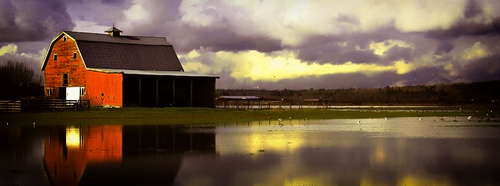In part one, we discussed the reality of farming in the future and the importance of understanding that unpredictability is going to be the only predictable thing moving forward. Success, however, doesn’t have to be an elusive goal even when extreme weather and climate shift pose significant challenges. Your ability to adopt specific strategies and innovative approaches depends on available time and resources, but some broad strategies have already been identified and shown to have success.
- Alter system inputs. Choose crop varieties or species that possess qualities that align with your farm climate, such as drought or heat shock tolerance. Choose a shorter or longer developing variety. Adjust fertilizer rates to maintain crop quality. Cornell’s Adapt-N program is a very useful tool for this.
- Develop a water budget. Experiment with ways to save water when abundant and efficiently move it to areas of need when there is a deficit. Understand your water needs throughout the season by looking at precipitation in recent years. NEWA’s apple irrigation tool is also useful for managing water use in orchards through the growing season.
- Plan for extremes. Manage extreme weather events to your advantage. Study weather patterns and trends in recent years. Assume they will become the norm and experiment with ways to save that water for later use and at the same time reduce erosion, reduce water-logged soil and prevent nutrient leaching. NEWA provides insect and disease forecasts to help inform management decisions from day to day in this respect.
- Minimize risk. Spread your investments over different income streams.
- Utilize IPM. Look for ways to incorporate, improve or refine integrated pest management practices to mitigate the impact of insects, disease and weeds on your bottom line. NEWA is a great resource for maximizing your IPM strategies in this respect.
- Utilize climate data. Understand weather trends in recent years and the possibility of things to come in the near future. Cornell Climate Smart Farming Tools and the Northeast Regional Climate Center can provide information for make longer term on-farm management decisions.
To learn more about these farm adaptation strategies, read this open-access PDF article.
Read part 1 and part 3 of this series.
